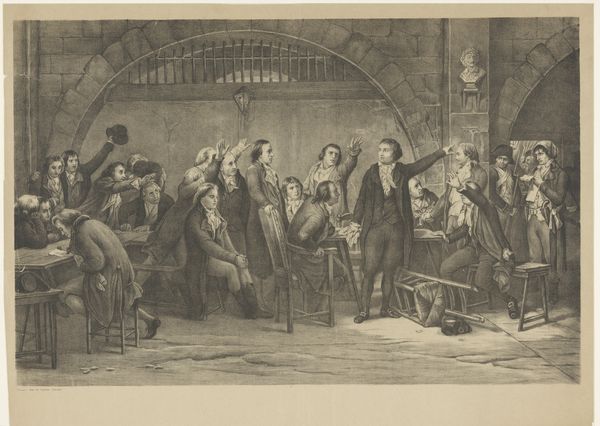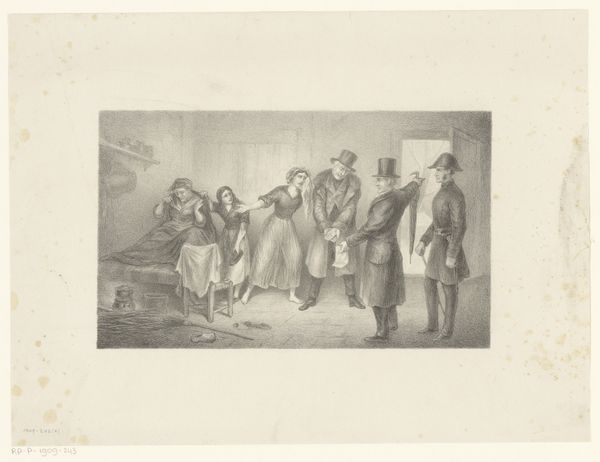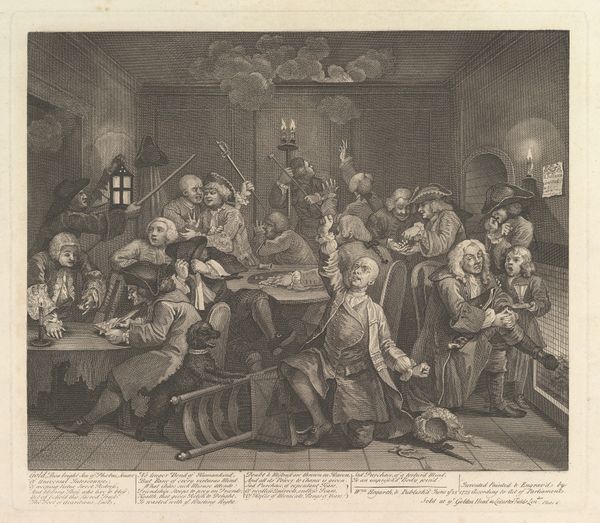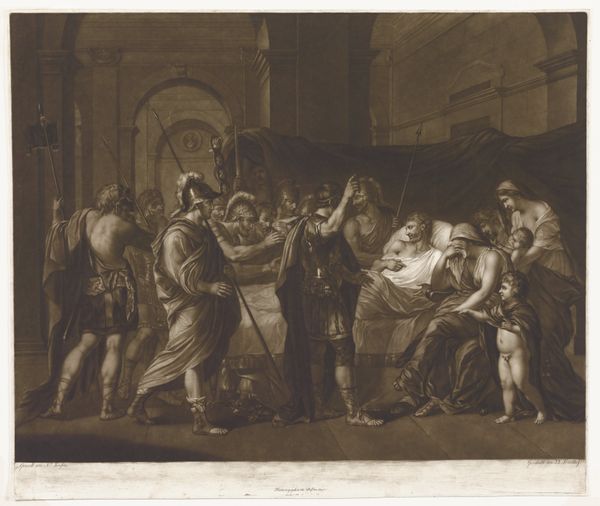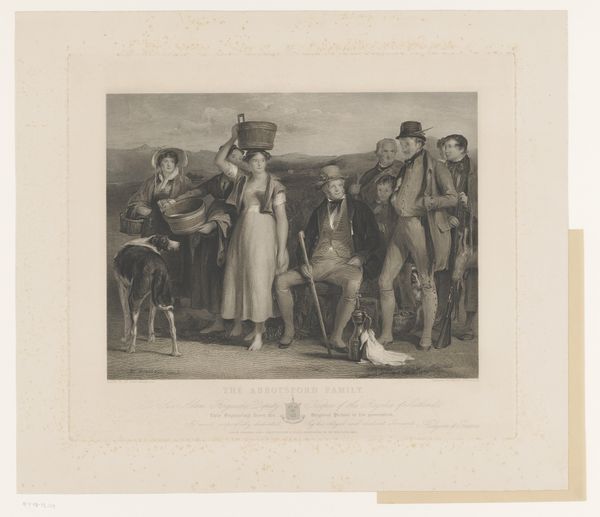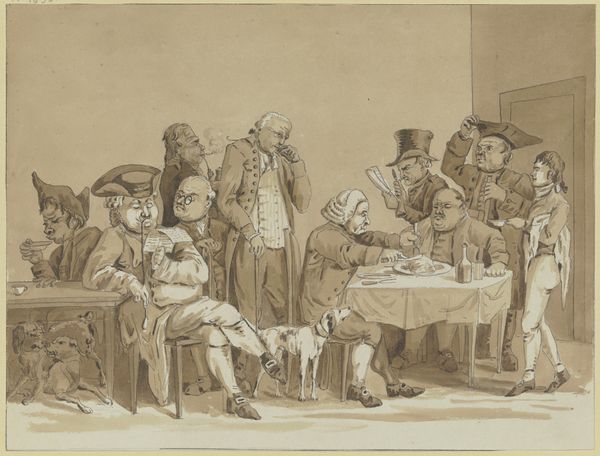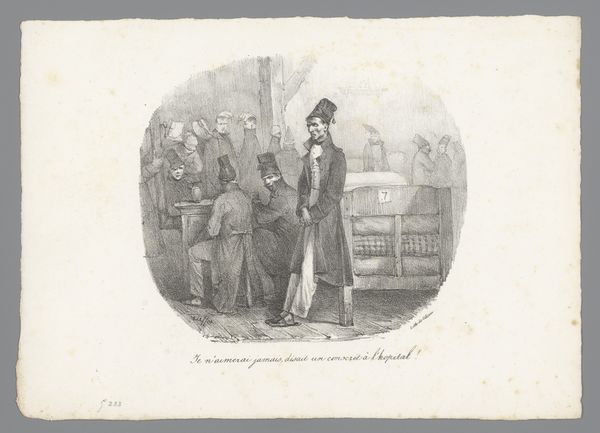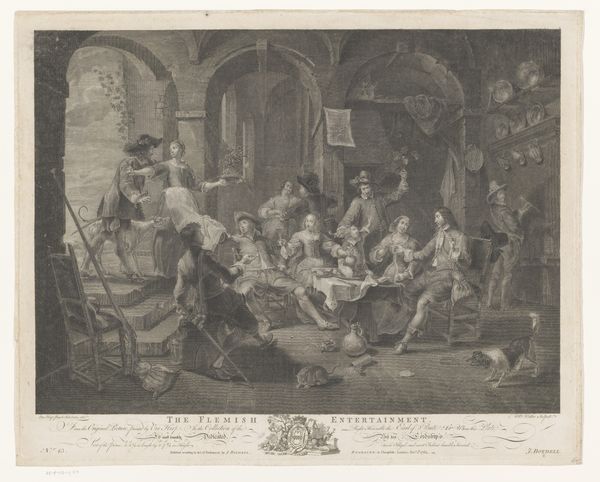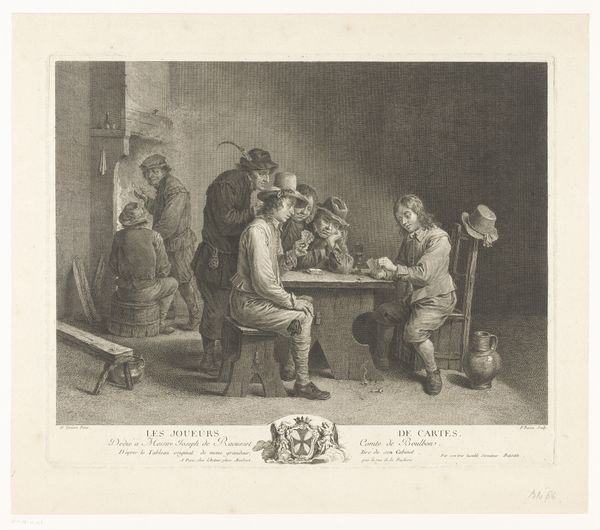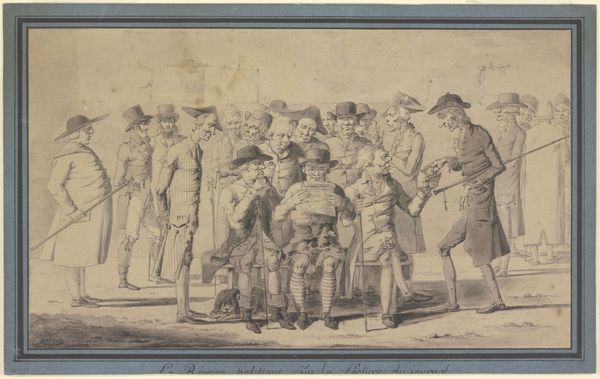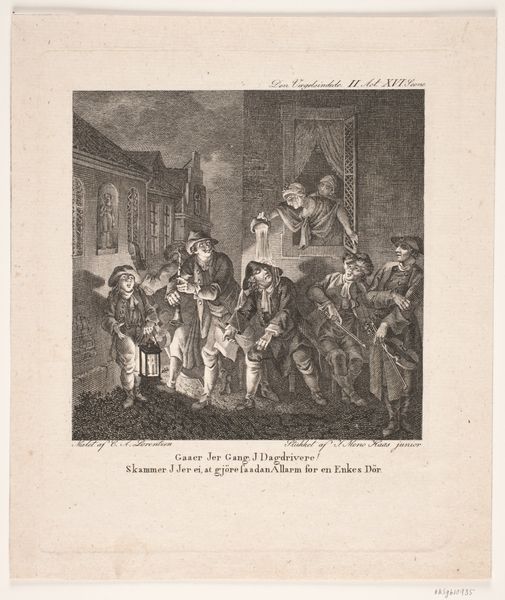
Dimensions: height 504 mm, width 663 mm
Copyright: Rijks Museum: Open Domain
Curator: Friedrich Jentzen's "Gezelschap van drinkende mannen in een wijnkelder," or "Company of Drinking Men in a Wine Cellar," is an engraving likely created between 1820 and 1875. What impressions does it give you? Editor: It feels…rowdy, but with a subtle, looming darkness. All the figures are packed together, but no one seems to truly connect. The contrast between light and shadow suggests something illicit, as though these revelers are deliberately hiding. Curator: The composition certainly leans into Baroque sensibilities. Observe the dramatic use of chiaroscuro, the play of light and shadow you noted. It isn't just atmospheric; it's a deliberate strategy that adds depth, but also serves to draw attention to certain figures, such as the solitary man ascending the staircase. Editor: That one figure does seem strangely separate. The whole scene feels a bit performative, each figure playing a part, locked in this loop of excess. Are we meant to judge their hedonism, do you think? Curator: Possibly. Genre painting, and even history painting from the era, often served a didactic purpose. The pleasures here—drinking, gambling, idleness—could be presented as moral failings. Yet, the very act of depiction, the focus on details of clothing, posture, and interior setting elevates the everyday life to an aesthetic level. The work oscillates between condemning and celebrating these aspects of society. Editor: I wonder, too, if it's also commenting on the nature of masculine spaces. There's a distinct lack of women, as the men indulge in these familiar rituals. It also appears that they play a strange bowling-type game at the margins of a massive cask of wine. The entire staging feels slightly claustrophobic and tense. Curator: That's an astute reading. The compressed space, punctuated by the light and shadow and the repetition of rounded shapes, does feel intentionally confining. Notice the architecture—the arched ceilings press down on the gathering, reinforcing that sense of being closed in. Editor: So, it becomes a visual representation of social, perhaps even self-imposed constraints. Curator: Precisely. By using the vocabulary of Baroque style, Jentzen is able to craft a space that speaks to tensions between liberty and restriction, enjoyment and judgement. Editor: It's a rather stark statement on freedom of behavior, visualized through these shadowed men and suggestive environments. I thought I would be laughing with them, but they seem trapped! Curator: Indeed, it's an image that reveals multiple perspectives—the potential dangers lurking beneath an exterior of good cheer.
Comments
No comments
Be the first to comment and join the conversation on the ultimate creative platform.

